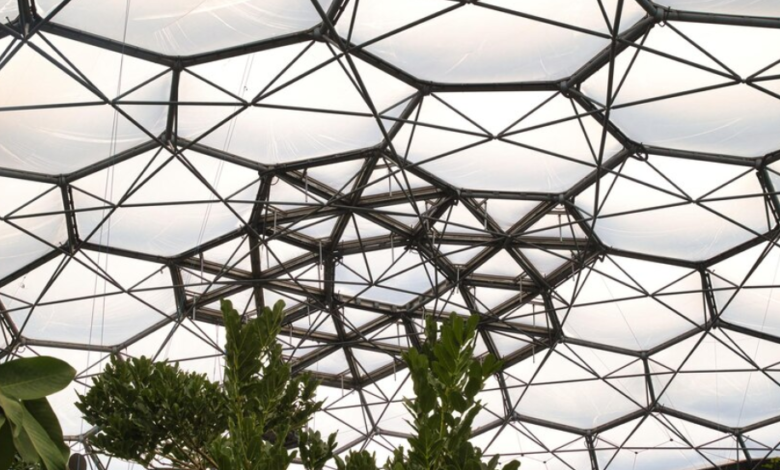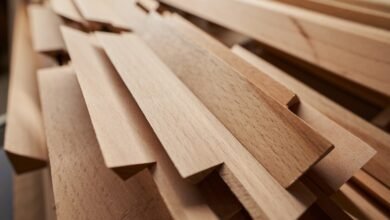Polycarbonate Roof Domes: Versatile Daylighting for Modern Architecture

Modern buildings demand practical and efficient design elements that not only enhance aesthetics but also contribute to energy efficiency and occupant well-being. One such element growing in popularity is the polycarbonate roof dome—a resilient, lightweight, and highly functional solution for bringing natural light into interior spaces.
Used in both residential and commercial architecture, polycarbonate roof domes offer unmatched durability and flexibility. This article explores everything you need to know about polycarbonate roof domes, including their benefits, applications, materials, installation considerations, and maintenance tips.
What Are Polycarbonate Roof Domes?
Polycarbonate roof domes are dome-shaped skylights typically installed on flat or low-pitched roofs. Made from high-impact polycarbonate plastic, these domes are designed to let in ample daylight while resisting harsh weather, UV radiation, and even vandalism.
They are commonly used in environments where high performance and reliability are required, such as schools, factories, warehouses, stairwells, corridors, and bathrooms. The domed shape allows for optimal light diffusion and rain runoff, making them ideal for year-round use.
Advantages of Polycarbonate Roof Domes
1. Exceptional Durability
Polycarbonate is known for its impact resistance—up to 200 times stronger than glass. This makes polycarbonate roof domes highly durable and perfect for areas prone to vandalism, hail, or other physical impacts.
2. Lightweight Design
Unlike traditional glass skylights, polycarbonate domes are lightweight, which simplifies installation and reduces structural demands on the roof.
3. High Light Transmission
Despite their strength, polycarbonate sheets can transmit up to 90% of natural light. Multi-wall variants offer a balance of brightness and insulation while reducing glare.
4. UV Resistance
Most polycarbonate roof domes come with a UV-protective coating, preventing yellowing and maintaining clarity over time while shielding occupants from harmful UV rays.
5. Versatile Aesthetic and Functional Options
Available in a range of shapes, sizes, finishes, and glazing types, polycarbonate domes can be customized to fit the aesthetic and functional needs of any building project.
6. Cost-Effective Solution
Compared to glass alternatives, polycarbonate is more affordable and less expensive to install and maintain, making it an ideal solution for budget-conscious projects.
Types of Polycarbonate Roof Domes
- Single-Skin Domes: A basic and cost-effective option, single-skin domes allow maximum light penetration but offer less insulation. Suitable for unheated or rarely occupied spaces like storage areas or service corridors.
- Double or Triple-Skin Domes: These feature multiple layers of polycarbonate, creating insulating air pockets between the layers. They offer better thermal performance and are suited for habitable spaces.
- Ventilated Domes: Ventilated polycarbonate roof domes include manually or electronically operable units for natural airflow. They are often used in kitchens, restrooms, or areas prone to humidity buildup.
- Access Domes: Designed to open wide, access domes allow rooftop access for maintenance or emergency egress. These are especially useful in commercial and industrial settings.
- Circular and Pyramid Domes: Beyond traditional dome shapes, polycarbonate skylights can come in pyramid, circular, or barrel vault configurations to suit specific architectural designs and light dispersion needs.
Key Applications
- Industrial and Warehouse Settings: Industrial facilities benefit from natural light in reducing energy consumption, improving visibility, and enhancing worker productivity and safety. Polycarbonate domes are ideal here due to their durability and cost-efficiency.
- Commercial Buildings: In offices, malls, and public buildings, these domes brighten spaces such as lobbies, corridors, and stairwells while contributing to modern and inviting design aesthetics.
- Educational Institutions: Schools and universities use polycarbonate domes in common areas to promote a pleasant learning environment and meet natural lighting guidelines.
- Healthcare Facilities: Polycarbonate roof domes provide soft, diffuse daylight that contributes to the calming atmosphere required in medical buildings and patient recovery rooms.
- Residential Properties: For flat-roofed homes or extensions, polycarbonate domes offer a budget-friendly way to introduce daylight into kitchens, bathrooms, hallways, and lofts.
Material Considerations
Polycarbonate Sheets
The most common material used, polycarbonate sheets can be solid or multi-walled, depending on the need for insulation. Their flexibility makes them suitable for curved or shaped applications.
Finishes and Tints
- Clear: Offers maximum light transmission and a clear view of the sky.
- Opal/Diffused: Reduces glare and distributes light evenly, perfect for workspaces or living areas.
- Bronze: Provides solar control and reduced heat gain, ideal for hot climates or sun-exposed roofs.
Fire Rating and Safety
Polycarbonate materials are available with fire ratings that meet building code requirements. They are also shatter-resistant, adding another layer of safety in public or high-traffic buildings.
Installation Guidelines
- Roof Compatibility: Polycarbonate domes are designed primarily for flat or low-pitch roofs. Proper upstands and mounting frames ensure water tightness and structural integrity.
- Flashing and Waterproofing: Correct flashing and sealing are critical. Most domes are installed with a thermally broken frame to minimize cold bridging and prevent condensation.
- Load Bearing: Though lightweight, larger domes or those exposed to heavy snow or wind loads must be properly supported and engineered. Reinforced upstands and mounting brackets are recommended.
- Compliance with Building Codes: Ensure the chosen dome meets local building regulations regarding fire safety, thermal performance, and structural loading.
- Orientation and Placement: Place domes strategically to maximize daylight while avoiding overheating. North-facing domes offer consistent lighting, while south-facing units may require solar control glazing.
Maintenance and Cleaning
Routine Checks
- Inspect seals and fasteners for signs of wear or movement.
- Check for yellowing or clouding that could impair light transmission.
- Clear away debris like leaves or snow buildup that may block light or water drainage.
Cleaning Tips
- Use a soft cloth with warm, soapy water.
- Avoid abrasive cleaners or solvents that can scratch or damage the surface.
- Clean both the dome and surrounding frame as part of regular building maintenance.
Longevity
Well-maintained polycarbonate domes can last 15–25 years, depending on exposure and material quality. UV-stabilized domes retain clarity and strength longer.
Sustainability and Energy Efficiency
- Reduced Energy Use: By providing natural daylight, polycarbonate roof domes decrease the need for artificial lighting during daylight hours, lowering electricity usage and carbon footprints.
- Passive Heating and Ventilation: Certain models allow for passive solar heating and natural ventilation, reducing dependence on HVAC systems.
- Recyclable Materials: Many polycarbonate products are recyclable, and manufacturers are increasingly offering options made from post-consumer or eco-friendly materials.
Trends and Innovations
- Smart Skylights: Some polycarbonate domes now integrate with smart home systems, allowing remote opening, automated shading, and climate control based on sensors.
- Modular Systems: Pre-fabricated dome systems can be installed quickly and scaled easily for larger projects, making them ideal for tight construction schedules.
- Hybrid Glazing: New technologies combine polycarbonate with glass or other materials to offer improved aesthetics and performance.
- Acoustic Insulation: Advanced polycarbonate domes now include acoustic layers that reduce external noise—a boon in urban settings.
Where to Buy Polycarbonate Roof Domes
Selecting a reputable supplier ensures long-term satisfaction and product support. Look for companies that offer certified, tested products and clear installation guidelines.
For a reliable and versatile range of polycarbonate roof domes, explore this curated collection of polycarbonate roof domes designed for both residential and commercial applications.
See Also: Precision Preservation: Mastering Quality and Safety with a High-Tech Food Dryer Machine
Conclusion
Polycarbonate roof domes represent a smart, durable, and cost-effective way to introduce natural light into virtually any building type. With their high impact resistance, thermal efficiency, and flexible design options, they offer substantial value in both aesthetics and functionality.
From reducing energy consumption to improving occupant well-being, these domes are more than just a lighting solution—they are a strategic architectural feature. Whether you’re working on a residential extension, industrial facility, or commercial complex, consider integrating polycarbonate domes to transform your spaces with daylight brilliance.





